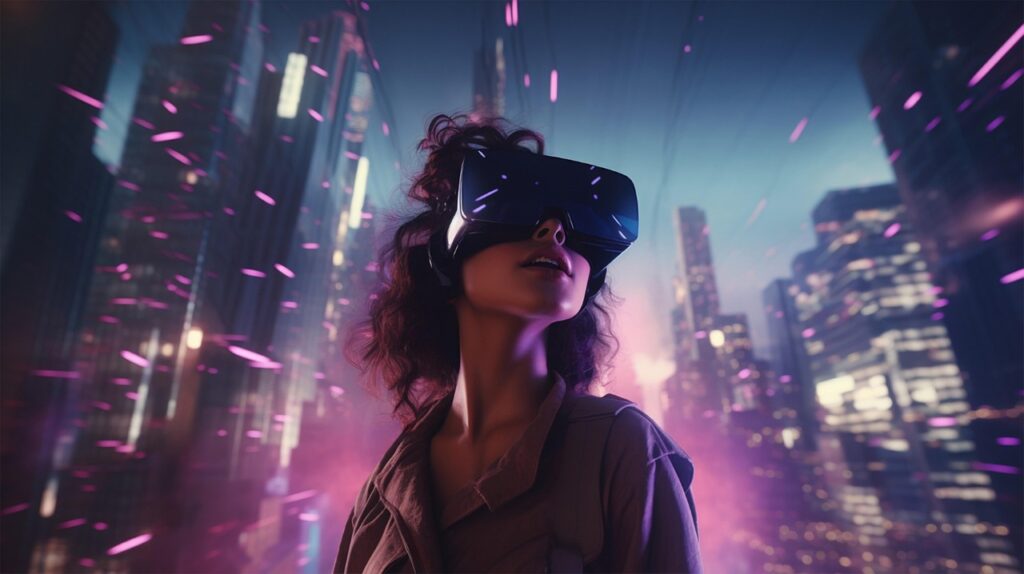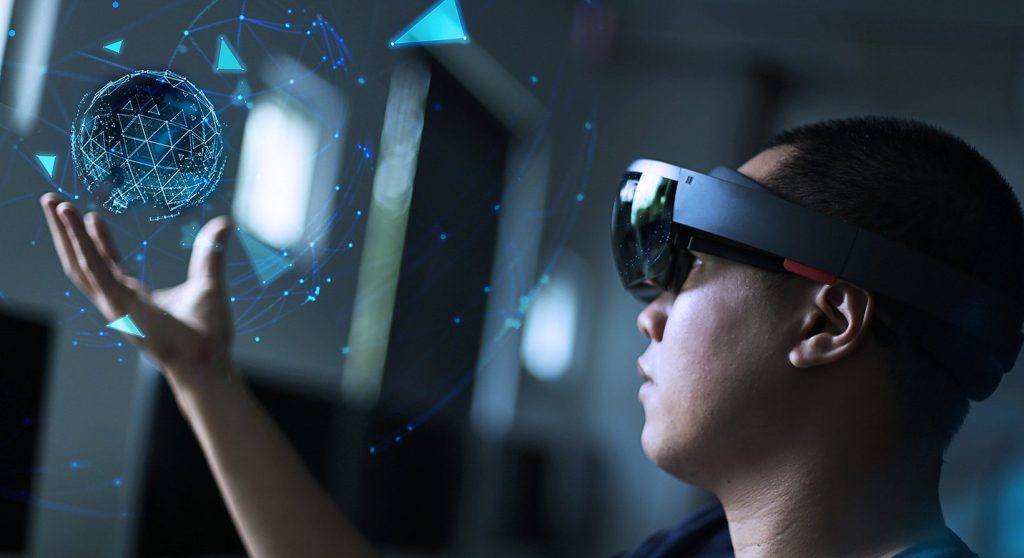Defense organizations worldwide are seeking more effective ways to train personnel. In this peculiar scenario, two technologies have emerged as real game changers: Artificial Intelligence and Extended Reality. The following sections will focus on how these tools are being integrated into military training programs to improve efficiency, adaptability, and preparedness.
This article aims to explain what AI, VR for military training and AR actually mean in a military context. It will look at how they enhance traditional training methods, provide measurable benefits, and offer scalable solutions that can be tailored to different missions and environments. Using real data and insights from the sector, we’ll highlight why armed forces, defense institutions, and private academies are rapidly adopting AI and XR to embrace the future of combat training.
How AI and XR Enhance Special Forces Simulations
To understand how military training is evolving, it’s essential to define how the technologies involved drive this change and how they are applied to developing combat-ready personnel.
The Role of AI in Military Training
In military training, AI creates intelligent, scenario-based simulations that evolve according to trainee responses. For example, suppose a soldier hesitates during a simulated ambush. In that case, AI may escalate the threat or change the behavior of virtual adversaries to increase pressure. This adaptive learning environment builds a soldier’s ability to think critically and respond quickly in unpredictable situations. AI also tracks performances, providing objective data about reaction times to instructors to maximize training sessions’ outcomes.
The Use of VR in Military Training
Virtual Reality immerses the trainee in a wholly digital environment using specific hardware. Soldiers can practice urban combat scenarios, aircraft navigation, or tactical operations in this controlled space without physical risk or logistical cost. These visually detailed simulations add realism to movements and actions like aiming, running, or engaging targets. VR is beneficial for mission rehearsal, equipment handling, and procedural drills, allowing repeated practice of critical tasks.
Augmented Reality in Field Training
While VR creates a fully digital world, AR overlays virtual elements in the real environment. This is particularly valuable during field exercises, where soldiers can see digital cues, mission objectives, or enemy locations through smart glasses. AR can highlight the correct way to dismantle a weapon or guide a field medic through emergency protocols thanks to specific devices used in medical and military training. These integrated solutions create an effective training system that adapts to each soldier, replicates real combat environments, and provides a safer way to develop combat readiness.
Why Defense Institutions use XR and AI in Military Training
Among the main features for which institutions are training their troops with XR and AI, we can mention:
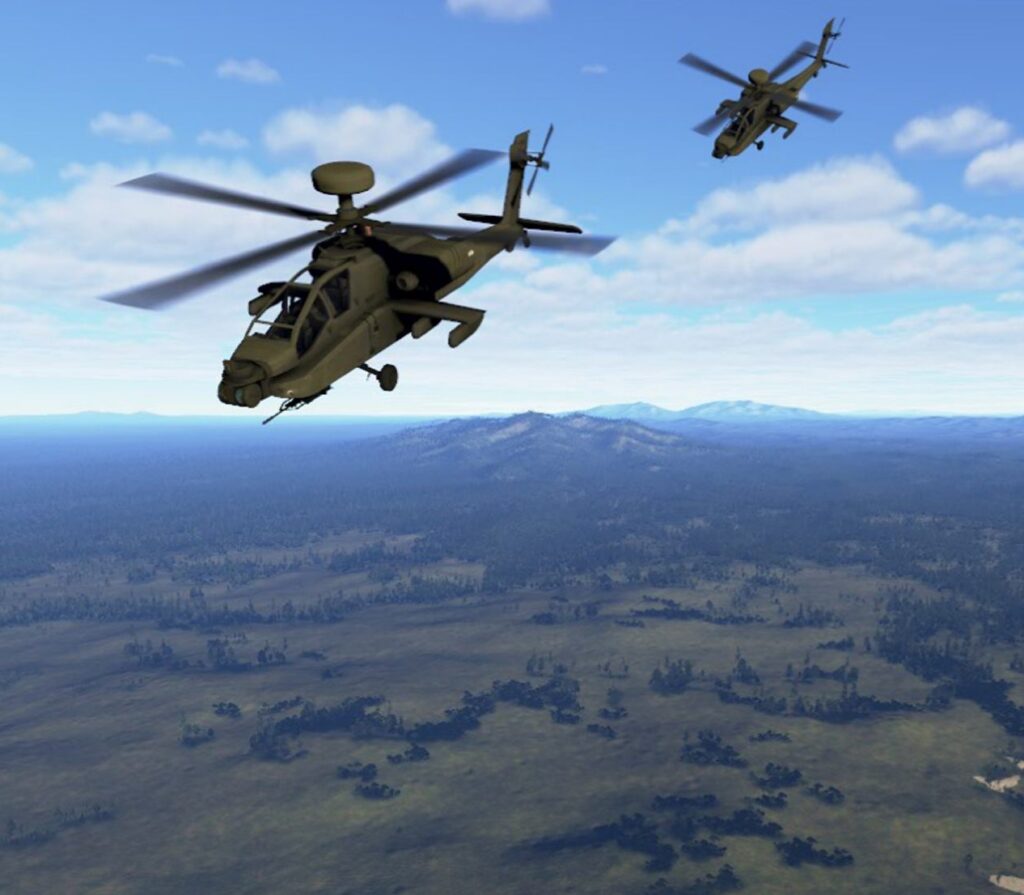
Hyper-Realistic and Adaptive Training
Combat is unpredictable. For this reason, soldiers train with AI technologies to undergo accurate simulations that consider potential tactical errors, demonstrate consequences with scenarios’ escalations, and develop quick decision-making and resilience.
Skill Tracking
AI enables precise tracking of trainee performance. Every movement, decision, and reaction is recorded, analyzed, and used to adjust future training modules. This level of insight is impossible to achieve in traditional exercises, ensuring continuous improvement over time.
Cost Efficiency
Live training exercises involve massive costs, while XR solutions drastically reduce expenses. Simulations can be conducted repeatedly with minimal operational costs, allowing entire units to train simultaneously in digital environments.
Enhanced Safety
VR military training replicates dangerous situations safely, allowing soldiers to gain experience in high-risk scenarios without endangering themselves or others during drills. This is especially valuable for training recruits or testing elite tactics.
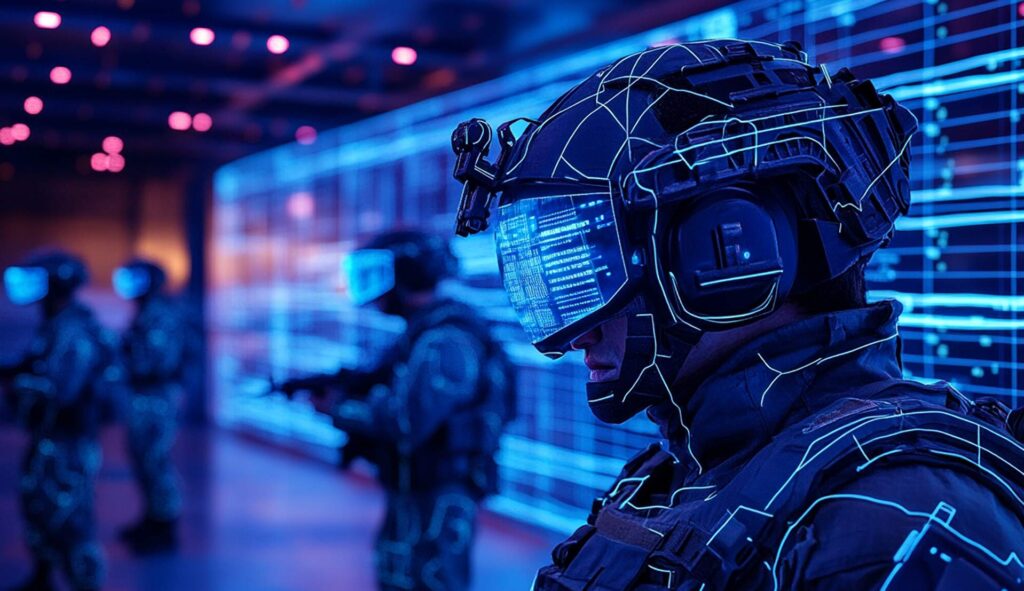
How Military Training is Evolving with AI and XR: A Look at the Data
The global defense sector is facing a rapid evolutive process, embracing immersive training consistently due to the proven success of such approaches. Not by chance, statistics affirm that 81% of the trainees undergoing immersive sessions boost their confidence and readiness. Moreover, the practical and realistic understanding of combat environments offered by AI and XR improves memory retention and muscle memory for complex maneuvers. Seeing these insights, it’s safe to say that VR for military training and AI is much more than a passing trend.
How do AI and XR Military Programs Work?
VR in military training and AI solutions present a specific setup that includes:
Immersive Simulation Environments
Soldiers wear VR headsets or use AR displays to enter detailed digital terrains like jungles, urban streets, and enemy bases. These scenarios are meticulously designed to reflect real-world topography and threat landscapes.
AI-Controlled Combat Agents
AI virtual enemies make the whole simulation more unpredictable. These agents learn and adapt to soldier behavior, ensuring that each session is unique and progressively challenging.
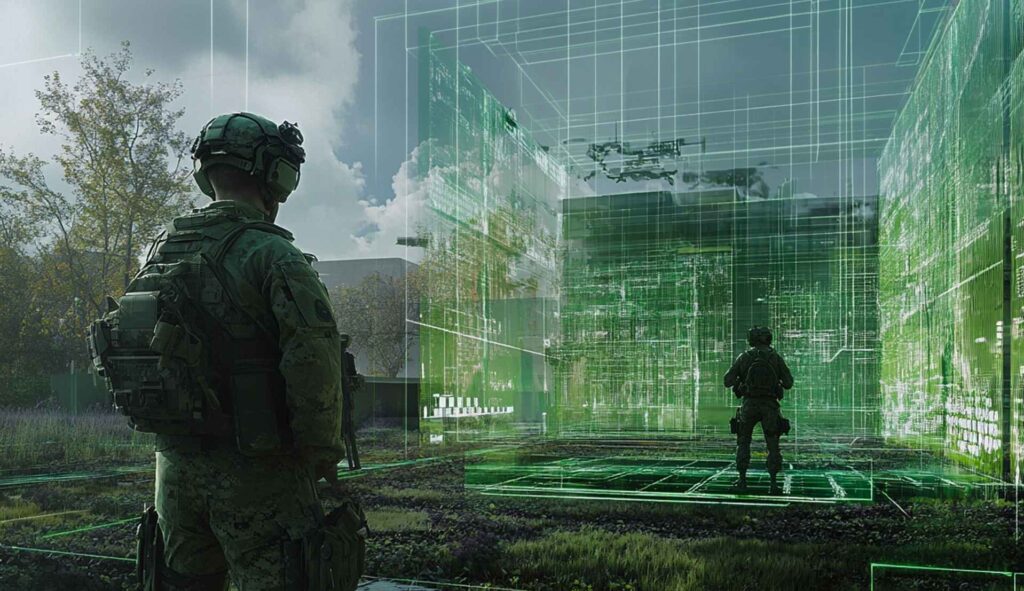
Real-Time Feedback and Analytics
As training unfolds, AI monitors everything, offering an accurate trainee evaluation. Commanders can view these insights and compare unit-wide metrics to perfectly arrange the sessions.
Multiplayer Collaboration
Teams train together in shared XR environments, either on-site or remotely, coordinating tactics and communication just as they would in the field.
The Benefits of AI and Virtual Reality for Military
From NATO forces to independent defense contractors and military academies, institutions around the globe are integrating AI and XR for several reasons:
- Future-Proofing Training: VR for military training enhanced with AI-powered solutions prepares soldiers for next-generation warfare, which increasingly involves autonomous threats.
- Institutional Efficiency: Digital training can be deployed rapidly, updated easily, and customized according to the specific department or in sight of a mission.
- Wider Reach and Accessibility: Remote bases or underfunded academies can now deliver world-class training with a headset and internet connection.
- Data-Driven Readiness: Command structures gain insights into troop preparedness, enabling more brilliant deployment and resource allocation decisions.
Enhance Your Defense Programs with YORD’s AI and XR Solutions for Military Training
AI and XR represent a standard in the military field. These technologies shape how soldiers learn, rehearse, and adapt, replacing static training with dynamic, responsive, and data-accurate preparation.
The battlefield of tomorrow demands more brilliant soldiers. YORD’s Immersive Technologies deliver the perfect solutions to embrace innovation in today’s dynamic defense sector.
As the industry evolves, nations that invest in advanced resources will lead in innovation and defense capability, troop safety, and strategic advances. Contact us to develop effective training programs for military purposes.
👋 Get in touch
By clicking the “send” button, I agree to the collection and processing of my personal data as described in the Privacy Policy.



